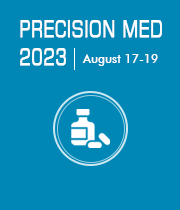Title: Time-ordered comorbidity correlations identify patients at risk of mis- and overdiagnosis
Abstract:
Unfortunately, diagnostic errors are common, and the increasing co-occurrence of diseases also increases the risk of erroneous diagnoses. We present a data-driven, generic approach for identifying patients potentially at risk of being mis- or over-diagnosed, here exemplified by Chronic Obstructive Pulmonary Disease (COPD). Literature based on a manual review of patient records estimated that 5–60% of all COPD cases are misdiagnosed. Hence, there is an urgent need to systematically identify patients at risk of mis- and over-diagnosis. Here, we have used the Danish National Patient Registry (NPR), which contains hospital diagnoses for 6.9 million patients for the entire Danish population over 21 years. We applied a previously published method to identify frequent disease trajectories comprising time-ordered comorbidities for the 284,154 patients diagnosed with COPD in the NPR. Interestingly, as many as 42,459 patients did not present with these time-ordered, common comorbidities. Comparing the individual disease history for each of these non-followers to the significant COPD trajectories, demonstrated that 9,597 patients were very unusual. Survival analysis demonstrated that this group of patients died significantly earlier than the ‘average’ COPD patients following a trajectory. Of the 9,597 patients, we identified one subgroup comprising 2,185 patients at risk of being misdiagnosed with COPD without the typical events of COPD patients. In all, 10% of these patients were diagnosed with lung cancer, and it seems likely that they are underdiagnosed with lung cancer as their laboratory test values and survival pattern are more like such patients than other COPD patients. Furthermore, only 4% had a lung function test registered in NPR to confirm the COPD diagnosis. Another subgroup with 2,368 patients was found to be at risk of “classically” over-diagnosed COPD as they survive more than 5.5 years after the COPD diagnosis, but without the typical complications of COPD. The method could, in the future, be used in a more real-time clinical setting by discovering patients with unusual disease patterns and subsequently clinicians could verify their COPD diagnosis with spirometry and consider other differential diagnoses more thoroughly. This method can also be used to investigate other cases of potentially mis- or over-diagnosed disease and stratify the diagnostic process to discover where errors might happen and thereby highlight the common pitfalls to prevent them in the future.


